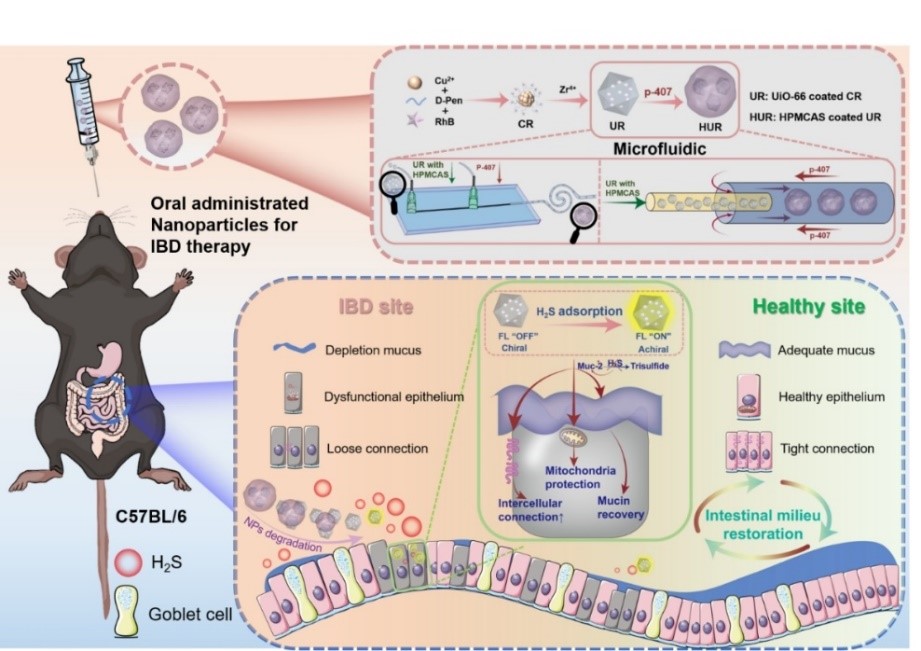Inflammatory bowel diseases (IBDs), such as Crohn’s disease (CD) and ulcerative colitis (UC), are chronic intestinal inflammatory diseases that occur worldwide and influence millions of people. Intestinal milieu disorders are strongly related to the occurrence of IBDs, which results from mucosa destruction, epithelium disruption and tight junction (TJ) proteins loss. Excess of H2S in the intestinal milieu produced by sulfate-reducing bacteria metabolism contributes to IBDs development via epithelial barrier breakdown. Conventional interventions, such as surgery and anti-inflammatory medications, are considered not completely effective because of frequent recurrence and other complications. Therefore, a therapeutic strategy that scavenge toxic substances to repair the intestinal milieu would provide novel strategy to against IBDs.
Herein, an enteric coating-based polymer-coated Zr-based metal-organic framework (UiO-66) with a Cux-rhodamine B (CR) probe (hereinafter referred to as HUR) was produced via co-flow microfluidic assistance with ability to reduce H2S levels, thus restoring the intestinal lumen milieu. The enteric coating exposed UiO-66@CR at the pH of the intestine rather than the acidic pH of the stomach. The synthesized HUR exhibited notable therapeutic efficacy, including mucosa recovery, epithelium integrity restoration and TJ proteins up-regulation via H2S scavenging to protect against intestinal barrier damage and microbiome dysbiosis. In conclusion, HUR with oral administration can reduce the H2S in the intestine, and ultimately improve the intestinal milieu balance, so as to treat IBDs. This work provided a reference for further exploration of nano drug treatment of intestinal diseases (Figure).

Scheme illustration
This research titled “Orally administrable H2S-scavenging metal-organic framework prepared by co-flow microfluidics for comprehensive” was published in Advanced Materials. Master student Dou Yunsheng is the first author. Associate Professor Li Nan is the last corresponding author. School of Pharmaceutical Science and Technology of Tianjin University is the first correspondence address. The research work was greatly supported and helped by faculties from the Analysis Center of the SPST. This work was supported by the National Natural Science of China, the National Key R&D Program of China, Young Elite Scientists Sponsorship Program by Tianjin and the Major Special Projects.
Linker: https://doi.org/10.1002/adma.202210047
By School of Pharmaceutical Science and Technology
Editor: Sun Xiaofang






